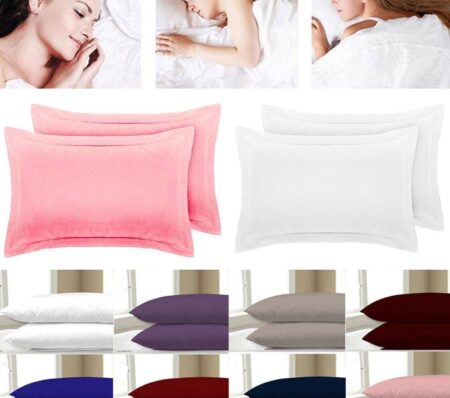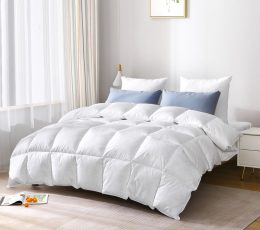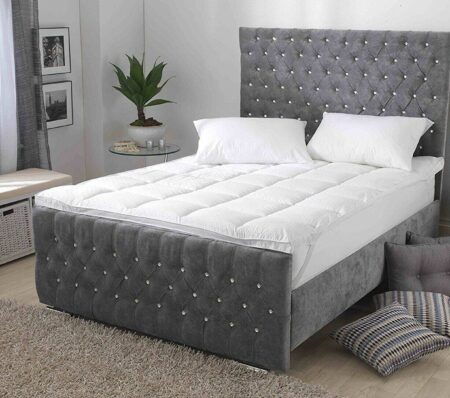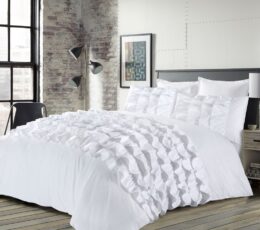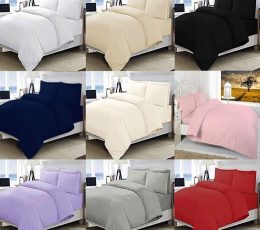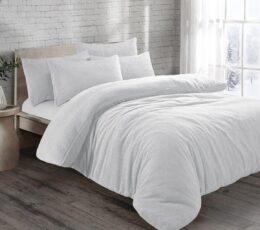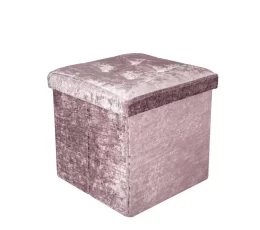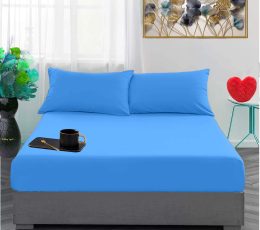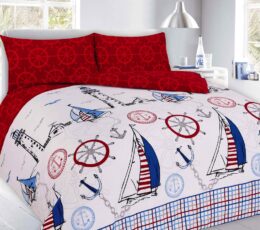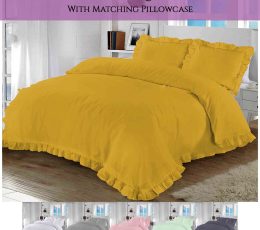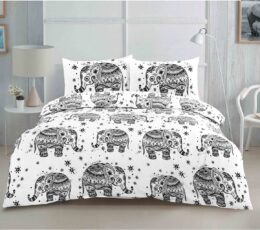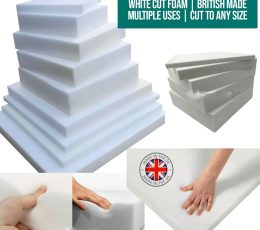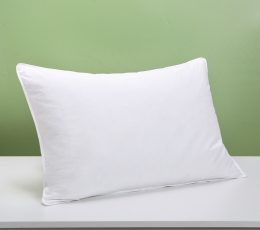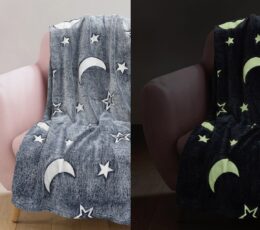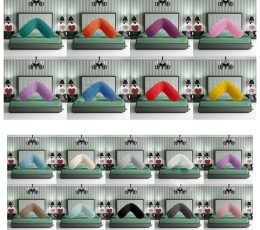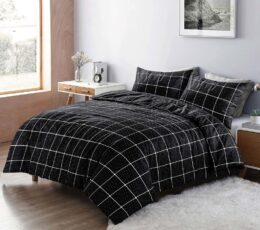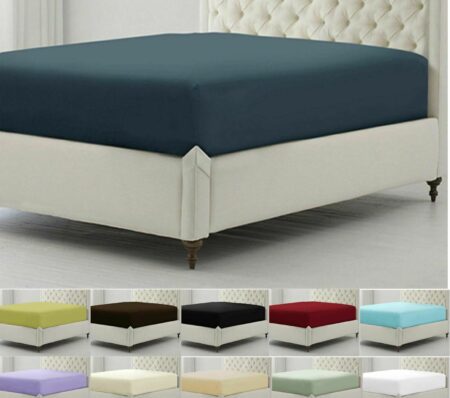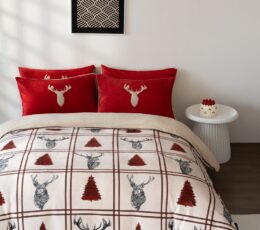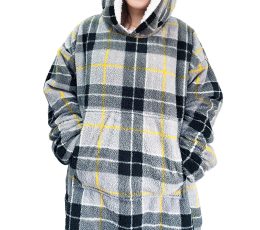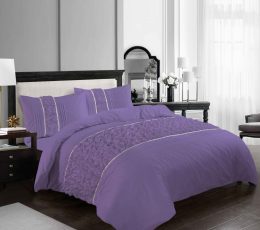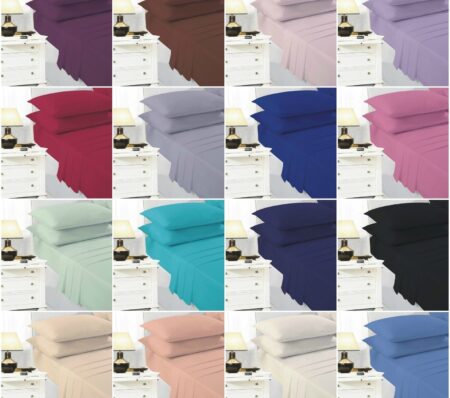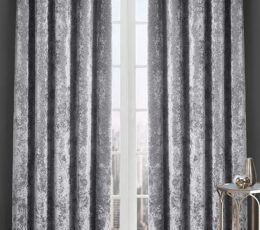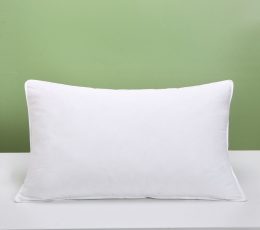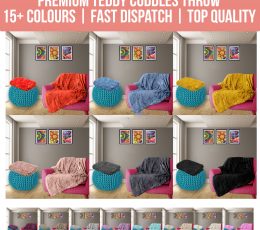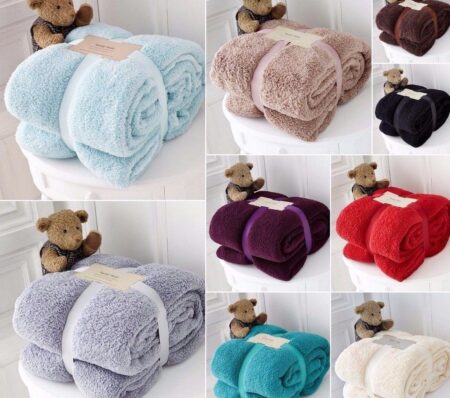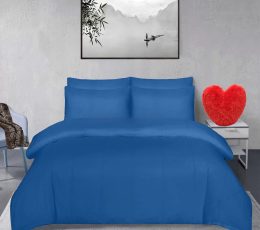As winter approaches and temperatures drop, the quest for a warm and cosy night’s sleep becomes a priority. Choosing the right single duvet is a crucial decision, and one of the key factors to consider is the top rating. In this comprehensive guide, we delve into the world of 18 Tog duvet, exploring the best to size, the relationship between tog ratings and thickness, and the warmth provided by different duvet fillings, including hollow fibre, microfibre, and down.

Which TOg Is Best AS Winter Tog Duvet?
The tog rating indicates a duvet’s ability to retain heat. For winter, a higher tog rating like 18 tog duvet king size is generally recommended to ensure sufficient warmth during colder nights. An 18 tog duvet is considered one of the hifghest tog ratings available, making it a popular choice for winter bedding. However, individual preferences and room temperatures also play a role, as some individuals may find an 18 tog duvets too warm, while others appreciate the extra insulation. Consider the duvet tog guide for better understanding of the tog ratings.
The 18 Tog duvet is mainly used for places that are very cold, and that is very rare. Normally, people choose the 15 tog duvet as the best winter duvet, as it provides enough insulation to protect from the cold and not warm enough to make you sweat. It’s important to know what is winter tog duvet as from that it helps to select the better duvet options.
People consider using an all-season duvet like 10.5 Tog that is used as all season duvets so that you don’t need to change the duvet frequently for every season, and they also last long enough if you invest in quality duvet. You can better understand the best tog for all season duvet that is usable for every seasons.
As for summer, we recommend using a duvet with a low tog rating, like a 4.5 Tog duvet, that provides a cosy feeling with less insulation than the summer duvet.
Does a Higher Tog Means Thicker Duvet?
While there is a correlation between tog rating and thickness, it’s essential to understand that thickness alone doesn’t determine warmth. The tog rating considers both the thickness and the insulating properties of the duvet. Therefore, a higher tog rating generally means a thicker duvet with enhanced insulation, providing more warmth. However, the filling also influences the duvet’s ability to trap and retain heat. Here you can check is 10.5 Tog duvet warm enough for winter use or not.
If you have two duvets, one of which is 7.5 tog duvet and the other 10.5 Tog duvet, without any question, we consider the 10.5 Tog duvet to have more thickness. But the duvet filling makes the case different. If the 7.5 Tog duvet is filled with a down feather duvet and the 10.5 Tog duvet is made with hollow fibre, then the duvet with the smaller tog is thicker than the other bigger one. So, remember you can’t consider the higher tog rating as being the thickness; you have to consider several other things matters.
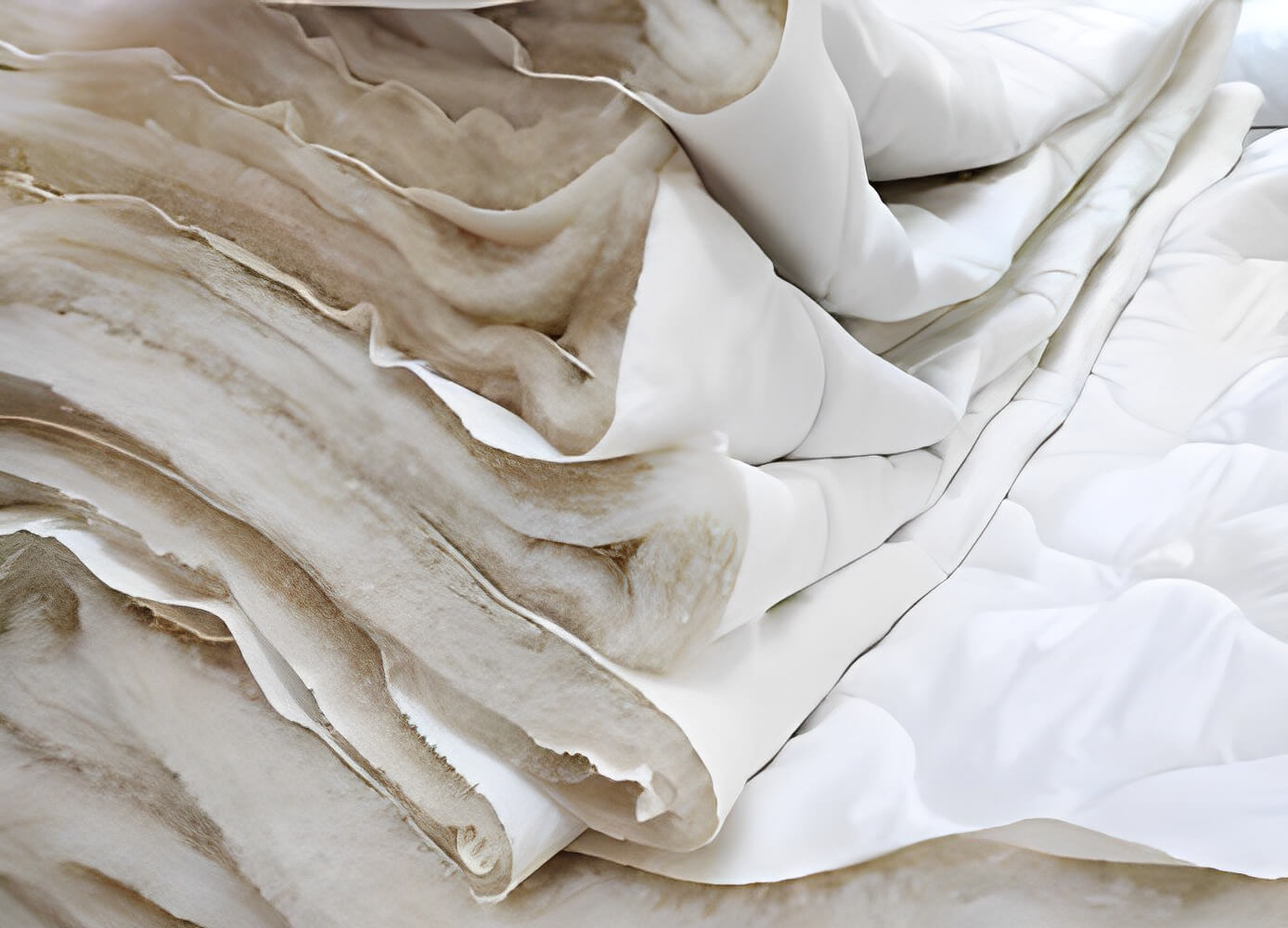
What is the Warmest Duvet Filling?
Coverless Duvet fill contribute significantly to warmth and comfort. Different fillings offer distinct characteristics, and understanding their properties is crucial when choosing a single winter duvet.
Hollowfibre Filling
The First thing comes to our mind is what is hollowfibre filling, so we can that the Hollowfibre is a synthetic filling known for its lightweight and hypoallergenic properties. Despite its lightness, hollow fibre provides excellent insulation, making it a popular choice for winter duvets. The hollow strands trap warm air, creating a thermal barrier that retains heat. Hollowfibre duvets are also suitable for individuals with allergies, as they resist dust mites and allergens.
MicroFiber Filling
Microfibre is another synthetic filling known for its softness and warmth. Similar to hollow fibre, microfibre duvets are lightweight yet effective in providing insulation. Microfibre fillings often mimic the texture of natural down, offering a luxurious feel without the use of animal products. Microfibre duvets are breathable, ensuring a comfortable sleep experience.
Down Filling
Down, derived from the fine under feathers of ducks or geese, is a natural and highly effective insulator. Down-filled duvets are renowned for their exceptional warmth-to-weight ratio. The clusters of down trap and retain warm air, creating a luxurious and cosy sleeping environment. While down duvets are known for their warmth, they may require careful maintenance and are not suitable for individuals with allergies to feather products.
The down duvets is mainly being used as the combintion as a goose down filling or duck down duvet and the most popular amoung this is feather and down duvet. Every one of this feels like down duvet. The best options for this duvet is 13.5 Duck feather down duvet that comes with both cotton and polyester cover to bring their own level of warmness.

Which is the best duvet material for cold sleepers?
If you’re a cold sleeper, finding the right duvet material is essential for ensuring a cosy and comfortable night’s sleep, especially during colder seasons. Different materials offer varying levels of insulation and warmth. There are mainly two types of filling materials: natural and synthetic; the natural one is the duvet, which is made of natural materials like cotton, duck feathers, etc. On the other side, synthetic duvets like hollow fibre and polyester are artificial materials that provide more comfort and save the environment.
Cotton Duvet
- Properties: Cotton is a natural and breathable fabric that wicks away moisture, making it suitable for maintaining a comfortable sleep temperature. Is Cotton 10.5 Tog duvet warn enough to use or it gives the chilness even after the cozy duvet cuddle.
- Warmth: While cotton is not as insulating as some other materials, it provides a moderate level of warmth, making it a good choice for those who prefer a cooler sleeping environment. You can use egyptian cotton duvet cover for more warmth and coziness. You can check our 10.5 Tog duvet with cotton cover.
Polyester Duvet
- Properties: Polyester is a synthetic material known for its durability, affordability, and resistance to wrinkles.
- Warmth: Polyester tends to be less breathable than natural fabrics, but it offers good insulation, making it suitable for cold sleepers who want a warm and lightweight option. Merge it with duvet cover polyester to get the extra warmth made up of artifical material that also protects the natural. You can check our 10.5 Tog duvet with polyester cover.
Polycotton Duvet
- Properties: Polycotton is a blend of polyester and cotton, combining the benefits of both materials.
- Warmth: The 50-50 blend offers a balance of warmth and breathability, making it a versatile choice for cold sleepers who desire a cosy feel without overheating.
Polypropylene Duvet
- Properties: Polypropylene is a synthetic material known for its moisture-wicking and insulating properties.
- Warmth: Polypropylene provides excellent insulation, making it suitable for cold sleepers. It is often used in combination with other materials to enhance warmth.
Microfibre Duvet
- Properties: Microfibre is a synthetic material with fine fibres that mimic the softness of natural down.
- Warmth: Microfibre duvets offer excellent warmth and are suitable for cold sleepers. They are lightweight, hypoallergenic, and provide a luxurious feel.
Wool Duvet
- Properties: Wool is a natural fibre known for its insulating properties and moisture-wicking abilities.
- Warmth: Wool duvets are excellent for cold sleepers as they provide exceptional warmth while regulating temperature. Wool can absorb and release moisture, ensuring a comfortable sleep environment.
Silk Duvet
- Properties: Silk is a natural and luxurious fabric with a smooth and soft texture.
- Warmth: Silk duvets offer lightweight insulation, making them suitable for cold sleepers who prefer a more breathable option. They provide warmth without feeling heavy.
Linen Duvet
- Properties: Linen is a natural and breathable fabric with a textured feel.
- Warmth: Linen duvets are ideal for cold sleepers who appreciate a breathable and lightweight option. They provide a comfortable sleep experience without excessive warmth.
Choosing the Best Duvet Material:
- Consider your personal preferences for warmth and breathability.
- Assess the climate and temperature conditions in your bedroom.
- Factor in any allergies or sensitivities to specific materials.
- Evaluate the care requirements of each material, as some may need special attention during washing.

FAQs
Q: What is the best size for a winter duvet?
For winter, a tog rating of 13.5 or above is generally recommended for optimal warmth. However, the best tog size depends on personal preferences, room temperature, and individual comfort needs.
Q: What is the warmest duvet for winter?
The warmest duvet for winter typically has a high tog rating, such as 15 tog or 18 tog duvet. Natural fillings like down and synthetic fillings like hollow fibre provide excellent insulation for maximum warmth.
Q: Is a 15 tog duvet too warm?
Whether a 15 tog duvet is too warm depends on personal preference and room temperature. It is considered very warm and is suitable for individuals who prefer a cosy and insulated sleep environment during colder months.
Q: What is the average winter duvet tog?
The average winter duvet tog falls between 10.5 and 13.5. This range provides sufficient warmth for most individuals during colder seasons without feeling excessively hot.
Q: What is the most common duvet tog?
The most common duvet tog for year-round use is 10.5. This tog rating strikes a balance between warmth and breathability, making it suitable for a variety of climates.
Q: What is the lowest tog duvet?
The lowest tog duvet typically starts at around 4.5. These lightweight duvets are ideal for warmer seasons or individuals who prefer a cooler sleep environment.
Q: Can you get an 18 tog duvet?
Yes, you can find duvets with an 18 tog rating. These high-top duvets are designed for maximum warmth and are well-suited for individuals who feel extremely cold during winter.
Q: How do I choose a duvet for winter?
To choose a duvet for winter, consider your warmth preferences, room temperature, and whether you tend to feel cold at night. Higher tog ratings, such as 13.5 or 15, are suitable for winter use.
Q: What is the coolest tog duvet?
The coolest tog duvet is typically around 4.5. These lightweight duvets are suitable for warmer seasons or individuals who prefer a cooler sleep experience.
Q: Why is my duvet always cold?
A cold duvet may be a result of insufficient insulation. Consider upgrading to a higher tog rating, especially if you feel cold during winter nights. Additionally, the type of filling and the duvet cover can impact warmth, so choose materials that provide adequate insulation. You can consider our how to choose duvet cover guide to get the perfect duvet.
From this, we can know If an 18 Tog Duvet Warm Enough for Winter or not. So, the answer is yes. For people with normal body temperature and environment, it should be pretty much highly insulated; we recommend using the 13.5 Tog duvet or 15-rated duvet for the best protection from the winter, as we can recommend using the all-season duvet that gives the versatility to be used in every season. While before buying the duvet its better to know how much to spend on duvet for not overpaying.


